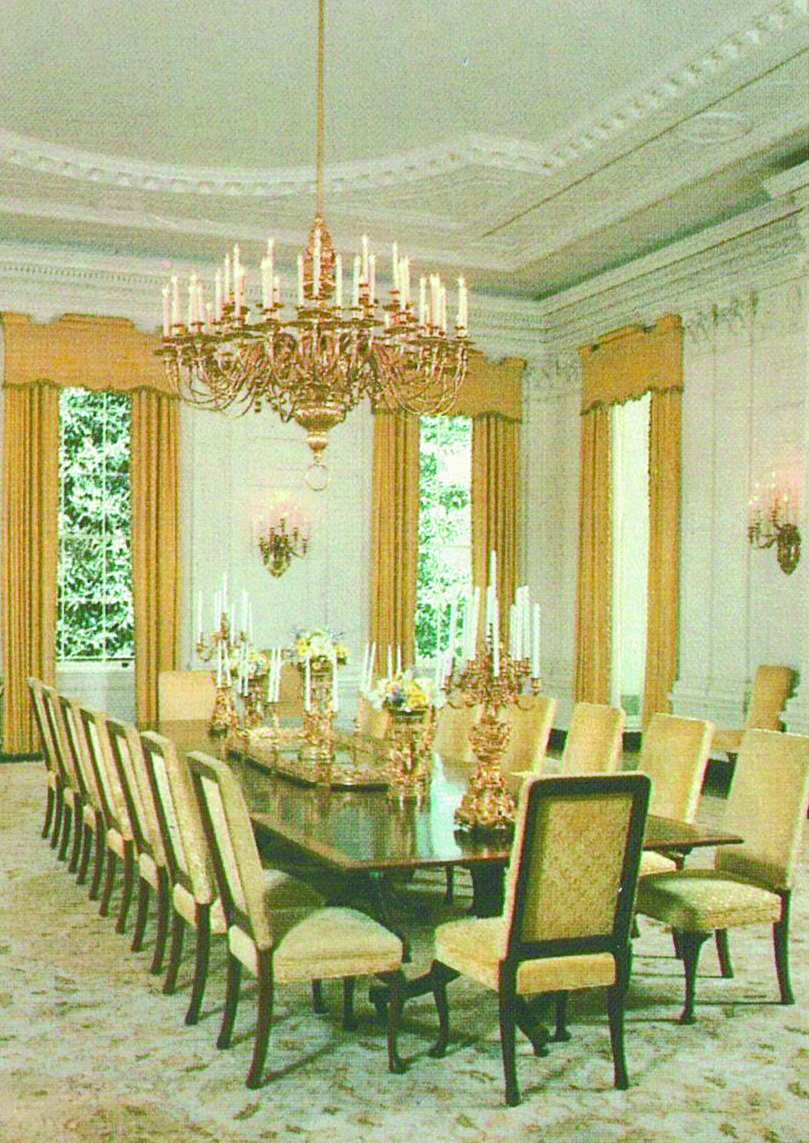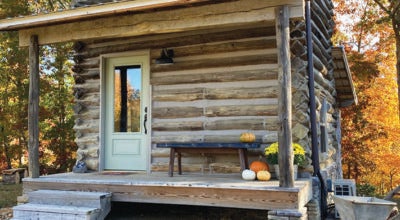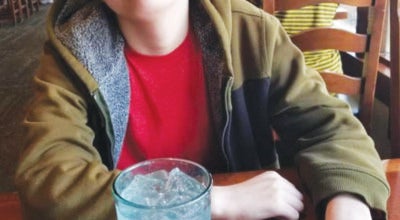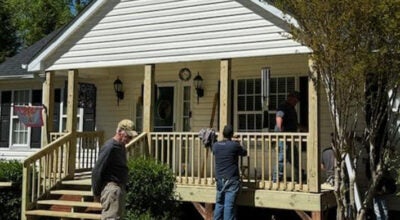Presidential Sites: White House changed the most during Truman, Kennedy years
Published 9:34 am Tuesday, November 23, 2021

- The State Dining Room.
|
Getting your Trinity Audio player ready...
|
By Betty Etchison West
For the Enterprise
Before becoming president, Mr. Monroe had served as a Minister to France. He and his wife, Elizabeth, learned to love everything French—the people, the customs, and the furniture.
When they moved to the President’s House, they ordered a great deal of furniture from France. Much of that French furniture remained in the President’s House for years but some of it was cast aside.
More than 100 years later and Mrs. Jacqueline Kennedy, wife of the 35th President of the United States, sought to restore the White House to its original appearance, she was able to find some of that furniture. She had each piece returned to its original spot in the mansion.
John Quincy Adams, the son of the second President, John Adams, and his wife, Abigail, was a one-term president who was more interested in the grounds than in the President’s House. Adams was defeated by Andrew Jackson who invited the public to a reception after the inauguration. Big mistake. Hundreds of people crowded into the President’s House and almost destroyed the furnishings. They stood on the furniture with their muddy boots, ruined the carpets, and cut the tassels off of the draperies for souvenirs. The crowd grew so dense that Jackson’s aides had to rescue him. They managed to get the President out through a window.
The staff in the mansion got the people out of the house by putting wash tubs full of punch on the lawn. That was probably the end of “Y’all come” invitations by a president. President Jackson, who was probably more interested in the grounds than in the mansion, planted a magnolia tree there as a memorial to his wife, Rachel, who died just before he was inaugurated. That tree, the oldest on the White House grounds, was removed 2018.
Andrew Jackson was followed by a series of presidents who make only small changes to the White House. They were Martin Van Buren, who brought a bit more elegance; William Henry Harrison, who died after serving one month; John Tyler, who completed Harrison’s term; James K. Polk; Zachary Tylor, who died after serving 16 months; and Millard Fillmore, who left a mark by adding a library to the White House, which was really brought about by the action of Fillmore’s wife, Abigail; Franklin Pierce; and James Buchanan.
Buchanan was followed by Abraham Lincoln, who was so burdened by the Civil War, that he was not interested in the President’s House. His wife, Mary, however, spent far more money than was allotted by Congress for the up-keep of the mansion. When the President found out about her spending, he was livid. He said, “It (the expenditures) can never have my approval…it would stink in the nostrils of the American people to have it said that the President … had approved a bill over-running an appropriation of $20,000 for flub dubs for this damned old house, when the soldiers cannot have blankets.”
When Lincoln was assassinated, his Vice-President, Andrew Johnson, became President, and finished the rest of Lincoln’s term.
The next President was Ulysses S. Grant. Mrs. Grant, like Mrs. Madison, loved living in the mansion. After serving two terms, Mr. Grant chose not to run again much to the chagrin of his wife. One author said that Mrs. Grant had to be pried from the President’s House like an oyster from its shell.
Mrs. Lucy Hayes, the wife of the next President, Rutherford B. Hayes, is often remembered as the lady who would not allow alcohol to be served in the President’s House.
President Hayes was followed by James Garfield, who was assassinated after serving about 4 months. Garfield’s Vice-President Chester Arthur became president. President Arthur was disgusted by the condition of the President’s House and immediately began to rid the house of furniture and bric-a-bracs that he considered loathsome. He discarded 24 loads of items that he detested, including 30 barrels of china. Arthur felt that the house needed to be completely re-decorated so Louis Tiffany was chosen to handle that task. Some of Mr. Arthur’s cast-offs were retrieved and placed back in the White House during Mrs. Kennedy’s restoration.
President Arthur was followed by Grover Cleveland, the only president to get married in the White House and the only person to serve split terms. Benjamin Harrison served between Cleveland two terms. When the Harrison family arrived at the President’s house, they found the family living quarters much too small for their large family. Mrs. Harrison tried without success to get the Congress to appropriate money to enlarge the family quarters. President William McKinley, who was elected following Cleveland’s second term, was killed by an assassin’s bullet. Vice-President Theodore Roosevelt became president.
Mr. Roosevelt’s big family could not fit into the small family quarters in the executive mansion. At last, Congress agreed that it was time to renovate the mansion which was called the White House instead of the President’s House at that time. The interior of the White House was completely torn out. President Roosevelt set a strict time line for the project to be completed. The book, “The White House” by Seale says: “Every shortcut possible was made in the push to complete the work. As a result, the 1902 renovation was largely cosmetic, not structural, and the short-comings would come to light dramatically in the near collapse of portions of the house only 46 years later.”
There were big changes made, however. The President’s offices were moved to a new structure which at time was called temporary but which today is still there and is now known as the West Wing. An East Wing was also constructed which today houses the offices of the First Lady. The old greenhouses were torn down and moved to another location.
After that major work and re-decoration of the White House, there was another series of presidents who basically just changed ways of entertaining and replaced things in the White House that were worn out or which they found undesirable. They were: William H. Taft; Woodrow Wilson; Warren G. Harding; Calvin Coolidge, whose wife, Grace, re-decorated the family quarters and helped plan the conversion of the White House attic into a third floor with bedrooms etc.; Herbert Hoover; and Franklin D. Roosevelt.
After President Roosevelt’s death, Vice-President Harry Truman became President and moved to the White House. Mr. Truman was concerned about the creaking floor, etc. Then a leg of Margaret’s Truman’s grand piano went through the floor causing the plaster ceiling in the private dining room below to fall and the chandeliers in the Blue room and the East Room to sway. That was the “the canary in the mine,” which indicated major trouble. A complete evaluation was ordered. It was decided that the inside of the house would have to be completely gutted leaving only the outside walls undisturbed.The White House was closed and the first family moved to the Blair House. After the interior was demolished, the house was put back together over a steel skeleton, leaving the outside wall only holding up its own weight. The house was built back, stronger than ever it had even been before. It was a long and trying process, but in March 1957, the Truman family was able to move back into the White House. The commissioners who had been in charge of the work, walked through the East, Green, Blue, Red and State Dining Rooms which were still the same but were much brighter and fresher. At that time, there were 54 rooms in the White House and 660 pounds of steel had been used to reinforce it. At last the White House was strong and secure, no more squeaking floors.
After the next President, Dwight D Eisenhower had served, John F. Kennedy was elected president. Mrs. Kennedy was concerned about the furnishings in the White House which seemed shoddy and just a hodge-podge of this and that. She decided that she wanted to return the White House to the elegance of its earlier days. She chose people who were knowledgeable about antiques and/or who were good fund raisers to help her. She wanted to raise the money for the project because she did not want to use government money. Mrs. Kennedy and her committee were successful. They were able to raise the necessary funds and were able to find much of the antique furniture that once had the White House as its home.
Mrs. Kennedy hosted a television tour to show the American people their House. Both the restoration and the televised tour were a great success. The White House was again beautiful and much of the antique furniture was once again in its original spot.
Since President Kennedy’s assassination in 1963, 11 men have served as President of the United States. Congress has appropriated money to each administration for repairs, replacements, etc. There have been many changes, but none as major as those which occurred during the Truman and Kennedy administrations.





